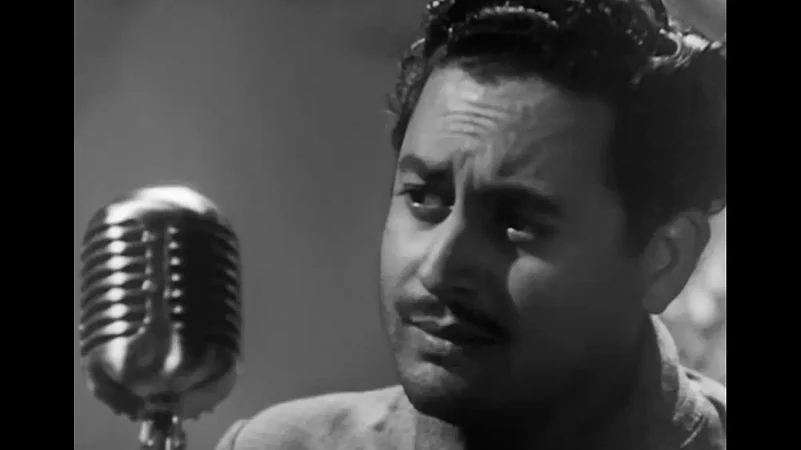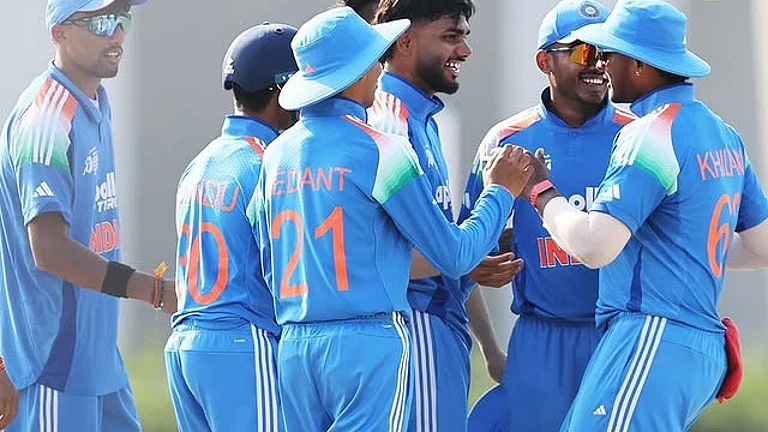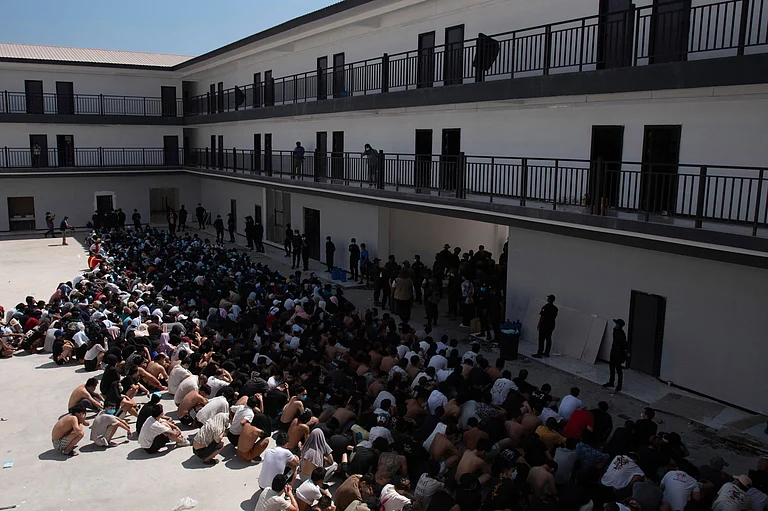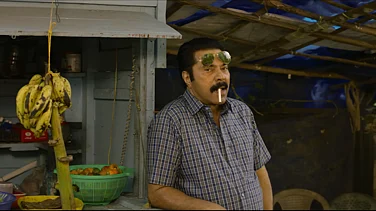Satyajit Ray, the great Indian filmmaker who has to his credit 35 national awards, an honorary academy award and is the only filmmaker after Charlie Chaplin to receive an honorary doctorate from the University of Oxford once complained in an interview, the "Indian audience is fairly backward, unsophisticated, only want commercial entertainment movies".
Ray, who primarily directed Bengali films for most of his illustrious career, was speaking from experience. Outside of Bengal, his films were viewed only by a handful of the educated elite.
This indifference was not something unique to Ray, His contemporary in Hindi cinema, Guru Dutt (whose birth anniversary is on 9 July), was similarly denied his genius in his lifetime. An engaging filmmaker, Dutt’s movies are a portrayal of human pain, suffering, life and philosophy. He was a rare artist whose films were influenced by personal subjective influences. He directed and made movies with inherent human values and illustrated them clearly with incidents.
I am not trained in the language of films but few filmmakers have talked to me through their films like Guru Dutt has. Guru Dutt's movies especially Pyaasa, Kagaaz K Phool, Sahib, Biwi aur Ghulam and Chaudhvi Ka Chand have imprinted on the soul and taught me eternal lessons about life, reality, existence, philosophy, and the relationship between art and life. His genius is elaborated when you compare him to other Hindi filmmakers of the era, where few would dare make films contemplating life.
While Art has always been a medium for expressing emotions, life, philosophy and literature, Dutt’s cinema has left a lasting impact on me. Years after first being introduced to his work I am still haunted by his images, I can recite lines from his films and I still hum his songs. His cinema made me understand existentialist cinema better than any book ever could.
Guru Dutt Shivashankar Padukone was born in Mangalore in 1925. Born in a Saraswati Brahmin family which has a tradition of being associated with Kashmir. His parents too were creative. As per his sister, acclaimed artist Lalitha Lajmi in Yasser Usman's biography "Guru Dutt, An unfinished story", it was their father who was a very creative and literary person, it was he whom Guru wrote the story "Kashmakash " in 1947 which was later made into the movie "Pyaasa" in 1957. His mother too was a creative person who passed matriculation one year after Guru's matriculation. His mother even translated one Bengali novel "Mithun" in Kannada. Financial instability and family issues led Guru to discontinue his studies He then joined as a telephone operator and then the Hindustan Lever Company.
He was adopted by film publicist B.B Benegal who was his mother's cousin. It was he who initiated him into films. Guru after his matriculation at the age of sixteen joined Udhay Shankar's Indian Cultural Centre where he was trained in dance and other performing art.
His uncle later took him to Poona and introduced him to Baburao Patel, partner of Prabhat studio where he joined as dance director. This was here only that he acted in a small role in the movie "Lakharam" in 1945. After Prabhat Studios, he assisted directors A. Banerjee and Gyan Mukherjee. After it, he became chief assistant director to Amiya Chakrabarti. Dutt’s creative genius and his obvious empathy for fellow human beings set him apart from the mainstream Hindi cinema of the time. While others were moved by the optimism of a newly independent nation, Dutt explored intense desire, suffering, abandonment and the cost of success.
His cult film, Pyaasa (1957), was based on a story " Kashmakash" he had written ten years ago. The story, was according to Dutt’s sister, based on his father’s life and his own experiences. Pyaasa is critical of Indian capitalism and how capitalism prostitutes everything. Sahir Ludhanivi's and S.D Burman's music immortalised the movie. The lyrics like "Har ek jism ghayal, har ek rooh pyaasi, Nigaahon mein ulfat, diloon mein udaasi, ye duniya hai ya alam e bad hawaasi, ye duniya agar mil bi jaaye toh kya hai (Each body is wounded, each soul filled with thirst. These glances of longing, these hearts bearing sadness. Is this the world or a realm without sense? For what shall it profit a man if he gains the world)?." With perfect scenes, dialogues, and visuals the movie has become an immortal classic.
A romantic melodrama, Pyassa traces the journey of a poet who thirsts for love, recognition and spiritual fulfilment. It tells us about him and how he fulfils himself for society and works as a coolie.
It explores the themes of how society views and evaluates people based on material considerations. Abandoned and rejected by most of his family and his beloved, the protagonist works as coolie all the time craving recognition and acceptance.
When he does finally get the recognition he craves, he finds it so hollow and immoral that he decides to renounce the world.
The world in Guru Dutt's films, like Pyaasa, keeps getting darker and intensely rejects the idea of time as decay and destruction. Poet Vijay struggles as a public figure, aware as he is of how people treated him after his initial failure. He sees through the adoring public, painfully aware that they flock to him for his fame, rather than his person. In the end, Vijay becomes a tired man where family, friends, and love are measured in terms of money. In the end, he leaves with prostitute Gulabu who supports and loves Vijay unconditionally.
It is essentially the story of a moral man in an immoral world driven by greed and self-interest. He is declared dead and committed to a mental asylum, further distancing him from the society he lives both literally and metaphorically. After coming out, with help from a few good people, the same people who had him committed to flock to him. These experiences make him question the world, and see the world for what it is: A place where social standing counts for more than the moral fibre that defines a man.
The movie was dark and the process of making it had been hard on Dutt. He had held onto the story for ten years, hoping to get the reigning star, Dilip Kumar to star in the role. Kumar, who was known as the “Tragedy King” for his pathos-driven acting used to sign only one film at a time and dates were hard to get by.
Sathya Saran in his book writes, after ten years with Guru Dutt, he wanted Dilip Kumar to act as the main lead in it. Kumar relented after a film distributor requested him to accept the role, but after he did not turn up on the first day of the shoot, Dutt took over as the lead. Years later Dilip Kumar denied signing the movie but regretted not taking up the role.
A similar thing happened when the shooting of Sahib, Biwi aur Ghulam. The role of Bhootnath which Dutt played himself was offered to Shashi Kapoor and Biswajeet. When they didn't respect time, Dutt took over the role himself Pyaasa is the most personal Dutt’s work and a chronicle of his personal tale of struggle and personal experiences of his early life. The movie and its songs, penned by Sahir Ludhiyanvi, also got praise from poet Faiz Ahmad Faiz. It was after this movie Guru attempted suicide for the first time.
The world in Guru Dutt's films, like Pyaasa, keeps getting darker and intensely rejects the idea of time as decay and destruction. Poet Vijay struggles as a public figure, aware as he is of how people treated him after his initial failure. He sees through the adoring public, painfully aware that they flock to him for his fame, rather than his person. In the end, Vijay becomes a tired man where family, friends, and love are measured in terms of money. In the end, leaves with prostitute Gulabu who supports and loves Vijay unconditionally.
Guru Dutt sees the world created by Guru Dutt through Guru Dutt's dull eyes. He brilliantly matches songs with visuals, and clothing places in a carefree class.
With his outstretched hands resting on the bookshelf, he crucifies himself in the early frames of "Jaane wo kaise log.... ", metaphorically being crucified in front of a crowd that looks on silently.
In ‘Kaagaz Ke Phool’ (1959), Shanti the actress leaves with few possessions. How Choti Bahu is left with little jewellery. How brilliantly his movies teach, human has first traumatic experience outside the womb.
Unlike most, Guru Dutt treats the women in his films with unusual care. They are fully realised characters rather than the pastiches that have usually dominated Indian cinema. His women: Gulabo in Pyaasa, Shanti in Kaagaz Ke Phool, Jaba in Sahib, Biwi Aur Ghulam are portrayed as abused sexual objects. His approach to the mother is Pyassa is maternal, yet human avoiding the cliché of semi-divinity that Hindi cinema is wont to fall back onto.
In Kaagaz Ke Phool, the protagonist creates and slowly falls in love with his own muse. The women in his life: His daughter and lover, both suffer the frailties of being human and are complex, nuanced characters, not just caricatures.
In Sahib, Biwi aur Ghulam, he exposes the double standards of a patriarchal society where Choti Bahu (Meena Kumari) gives herself to the bottle seeking acceptance from her philandering husband.
The rise and fall of Guru Dutt belongs to the period of prolific directors and artists who were carving out their different paths to material success, part of very much the same cinema Guru stood apart, he saw an environment around which he probably felt trapped.
He was unique and different. His muse Waheeda Rehman, who Guru discovered, wrote in a tribute ‘Guruji and I’ in "Journal Of Film Industry" published on November 17, 1967: "He was an extremely sensitive, extremely introvert, quiet and complex person. He had everything fame, money not contentment that is why he eulogized death where he will be in contentment. He wished and longed for death and he got it. He also believed in God, he never asked me to pray for his films but B.R Chopra's films which was made without songs so that it inspires people."
He was 34 when he produced and directed the first Cinemascope movie in India, ‘Kagaz Ke Phool’. As per film historian and documentary filmmaker Nasreen Munni Kabir in her book ‘Guru Dutt, A Life In Cinema’, most of the people who were close to him and worked with him say that it was a film he made himself, a fictional autobiographical movie. As per her musician S.D. Burman had told him " Guru don't make this movie, it is about your life to which he replied, "I will do my work and you concentrate on your music". Guru and Burman never worked together again. It turned out to be a box office disaster but has over the years become a cult classic. The movie is about unhappy marriage and a confused relationship between a director with a muse. It is about a famous and brilliant director Suresh Sinha, whose Anglicised Indian in-laws and wife who are and wife aren't happy with his chosen profession. They take away the custody of his daughter Pami from him.
He develops actress Shanti into a great actress and they fall for each other without telling each other. Their relationship is communicated through intense repression, gestures and uncommunicated feelings. This was the brilliance of Guru. When his daughter Pami meets Shanti about their relationship which is talked of cinema magazines and gossip. Shanti leaves the town. This impacts the career of Suresh and he keeps on feeling. When Shanti is get back into movies through a court order because of her contract with the producer. She wanted Suresh to work again and keeps this condition with the producer which he accepts. Suresh because of his ego and self-respect doesn't come back. He lives a poor, destitute, miserable life and in the end, while playing a minor role with a different identity dies in the same studio where he had worked. Shanti recognizes him. After the movie failed at the box office, Guru lost confidence and never directed a movie again. Guru believed that written words can't convey what cinema can. As per his brother Atma Ram, who assisted him in many of his movie's interviews with Nasreen Munni Kabir in his book when effects man Kishan Malik criticized Kagaz Ke Phool once it was completed and shown to the team for opinion and comments, Dutt rewrote dialogues and shot it completely again.
His movies like Kaagaz Ke Phool, Pyaasa and Sahib, Biwi Aur Ghulam portray a world where desires are intense and suffering abundant. To Dutt, the system and society are broken and the only solution to save the soul from the contagion of greed is to run away or destroy yourself. He through his cinema condemns fake values of the world and mocks fickle mindedness of society. In an interview with "Screen" Published on April 5, 1952, he said, "Topics should not be selected on the screen unless they carry solutions ". This is what he practically did.
The relationship between Shanti and Suresh Sinha in Kagaaz Ke Phool reflected the real-life complex relationship between Waheeda Rehman and her father, a district collector who passed when she was very young. The family then had financial issues. As she had not much education, she couldn't get a job. As she was trained as a dancer family friend C.V. R Prasad offered her a dancing role in Rojulu Marrayi. Guru Dutt was in the same city to meet a film distributor for his film "Aar Paar", the cast of Rojuli Marrayi was passing through them and Guru enquired about them, distributor replied about them, praised dance of Waheeda Rehman in the movie and fixed a meeting between them. Guru asked her a few questions, but no test was taken, only a few clicks were clicked. This was how a great star Waheeda Rehman became a star actress and went on to act in great movies like Pyaasa, Kaaghaz Ke Phool, Sahib, Biwi aur Ghulam, Guide etc and was the first Hindi actress to work in great Satyajit Ray's Bengali movie Abhijam. Waheeda in one of her interviews said that " I am a great believer in destiny and this was in my destiny".
It was after Sahib, Biwi Aur Ghulam that Guru and Waheeda's relationship turned bitter. As per Yasser Usman in his interview with his sister L Lajmi, Guru told him not to keep in touch with Waheeda, they had a close relationship and used to visit each other's home. Guru had visited her home with flowers and she hadn't even opened the door. After this movie, Guru never offered any role to Waheeda. It was after Sahab, Biwi Aur Ghulam had failed in the 13th Berlin International Festival. As per Firize Rangoonwala in his book ‘Guru Dutt(1925-1965), A Monograph’, Sahib, Biwi Aur Ghulam failed because the Western audience couldn't understand the social problems of India, like why women would leave chastity and drink for their husbands.
In the days following the failure of the film, he demolished his beautiful bungalow in Mumbai’s Pali Hill after it. When he was asked the reason, he said it was because for his wife Geeta, as she believed the bungalow was haunted and their relationship was damaged because of it. He then shifted to a rented place. Bimal Mitra his screenplay and dialogue writer was shocked to learn about it when he visited him. He even tried to commit suicide because he couldn't find solace. When people close to him told him he had fame, recognition, money – everything other people crave – asking a reason for it, he replied, "I am dissatisfied with myself, what most people possess if I get that life would be worth living, I had a house, not home which is more heartbreaking". After the demolition, he visited Kashmir with his family to spend time with the family and improve ties with his wife.
As per Nasreen Munni Kabir in her interview with Guru's sister, Guru had a troubled childhood – one of his brothers died at a very young age, his family had financial instability and his parents had constant fights with each other. This impacted him deeply and manifested later in his life. Guru also had difficult romantic relationships also since the beginning. As per his sister in Yasser Usman's biography on him, he had a relationship with one lady Vijaya during the shooting of "Hum Ek Hain". Guru was underage for marriage at this time but it is said she was of dubious character and used to go with a lot of men.
After this, he had a relationship with playback singer Geeta Roy whom he later married. She even said that Guru once felt insecure with Geeta and before marriage once took her to the shrine of Haji Malang in Kalyani for swearing whether she will marry him or the Bengali guy family had looked for her. It was a very toxic and unhappy marriage for them. He then had a relationship with the actress he introduced, Waheeda Rehman.
His close associate Abrar Alvi's interview with Sathya Saran in his book "Waheeda's brother in law announced from Jamia Masjid Bombay that famous filmmaker, director, and actor Guru Dutt will become Muslim and marry Waheeda". It deeply impacted Guru's mental health and his family life. It was during this time, he attempted suicide a second time. After gaining consciousness after three days, he was looking for his wife Geeta. After this, he even shelved his movie ‘Gauri’ “because Geeta didn't want to pursue the movie".
Guru expressed his emotions in his very rare writings. what he communicated to the world through his cinema. In his article ‘Classics and Cash’ published in his annual publication of "Celluloid", after the release of ‘Sahib, Biwi Aur Ghulam’. he writes "Tulsidas wrote great Classic Ramayana faced financial hardships, Kabir remained poor despite poetic genius and Narsimha Mehta wrote ageless hymns like " Vaishnav Jan", but still had to mortgage his favourite raag to pay to his family debts. In recent times, Miss Amrita Sher Gill, one of India's greatest artists curtailed his life at the young age of 29 in 1944. She wrote before death that "In a stain for appreciation, literally tarnished. My ink is underpaid less. Indeed Posthumous acclaim has been the fate of many creators of classics. Prithviraj Kapoor, stage doyen of times who gave classic dramas like Deewar and Pathar closed company because of lack of patronage. Litereaur Gurudev Rabindranath Tagore got acclaimed after he got Nobel from a foreign. Brilliant filmmaker Satyajit Ray is hailed more in foreign than India. While in foreign literary giants like Victor Hugo and George Bernard Shaw made fortunes. A canvas by Picasso fetched him millions in his own life."
His statement reflects the alienation he felt after audiences rejected the films that are now considered to be some of the best produced in Hindi cinema.
Guru Dutt however left an impact on a whole new generation of filmmakers and writers. His cousin and veteran filmmaker Shyam Benegal, said in one of his interviews Benegal says, he got inclined towards cinema when he saw Guru Dutt. In his book ‘Talking Films and Songs, In conversation with Javed Akhtar’, veteran screenplay writer and lyricist, Javed Akhtar and Nasreen Munni Kabir write that he came to Bombay to meet Guru Dutt but couldn't because he died before he got a chance to meet. In his book ‘Jiya Jale: The Stories of Song, In Conversation with Gulzar’, veteran poet, writer, director and lyricist Gulzar and Nasreen Munni Kabir write that "Dialogue is not of primary importance in Guru Dutt's work. It is visuals that matter in cinematic movies like his. I deeply regret of not meeting him. "
His friend and close associate Abrar Alvi writes in his tribute that "Guru was always lost in his work. Once Maharaja of Baroda visited his studio with some British ladies, he talked to him for some minutes as courtesy and then went back to filming. His brother Atma Ram who assisted him in many of his films in one of his interviews said "He didn't live social life". His mother in her memoir published in "Imprint, 1979" writes that he liked a quiet life, he purchased land in faraway places, in Lanovla, built a two-room flat and used to do farming and stay there on weekends. Sister Lalitha Lajmi in an interview said "He had disturbance within as depicted in Pyaasa and Kaagaz Ke Phool. He was extremely introvert. He used to ring me and tell me I have to tell you something but never said anything." S.D Burman in one of his interview says, "He was very hardworking, used to drink heavily on the night and used to be first to come to sets in the morning". He was a very honest and sincere filmmaker. He once fired his assistant V. Bhadekar, because Bhadekar insisted on calling him Sir on sets. He fired him saying that relationships based on one dominating another don't work.
He died at the young age of 39 after overdosing on sleeping pills. Before it, he had tried to commit suicide twice. Despite having a short span of career in filmmaking, he left a legacy and is considered among the finest and iconic filmmaker ever in the Hindi film industry. His core film team member and director Abrar Alivi writes in a tribute titled "Hamlet of Films" in Filmfare on October 30, 1964, that "Guru was a thinker all his life, he kept thinking even in his sleep. He was genuine and sincere to the core. He had mental agony and emotional fatigue which led to making cult classic movies. He further writes that it was on the same unfortunate day that he was discussing dialogues of his upcoming movie "Bahaarein Fir Aayegein". While narrating dialogues, he replied to him that " He will turn mad and loneliness is becoming very oppressive for him". His close friend and veteran actor Dev Anand writes in his tribute " Tribute to an artist " Published in "Screen" on October 23, 1964, that "He was a very keen and eager student of cinema with a particular sense of visuals and rhythms". Dev Anand further writes about him in his autobiography, ‘Romancing with Life, An Autobiography’ that "The evening before death, he had invited me to his apartment and told me for doing a film together. We had met after ages. He was pale and swollen, had a weak voice, and was losing hair. He was the greatest friend I ever had in the film industry". One day before his death he had called Raj Kapoor and O.P Nayyar but both were busy.
In the days before he died, he refused to accompany his wife to a musical evening, where one of his favourites Abdul Hakeem Khan was slated to play, saying he would feel lost in the crowd.
He shelved many movies and was acting in Legendary K. Asif's movie "Love and God". and before the completion of the movie K. Asif too died. By this time, he had shelved most of his movies and was working on K. Asif’s “Love and God,” a film that never saw the light of day.
After eight years of his death, his wife Geeta Dutt too passed away because of a nervous breakdown. Before that, she was so mentally unwell that she couldn't even recognize her children. His son Tarun Dutt too committed suicide in 1989.
Urdu poet and lyricist Kaifi Azmi wrote in a tribute to Guru Dutt "Rehne ko sadaa dehr mein aata nahi koi, tum jaaise bi gaye aise bi jaata nahin koi (No one comes to stay forever, but no one leaves as you did). He was born ahead of time, lost in filmmaking and lost in life.

























